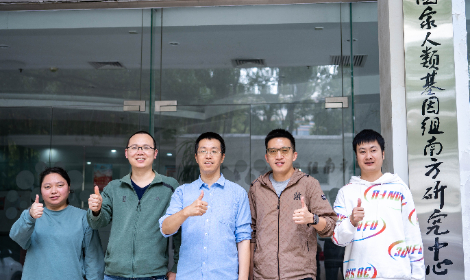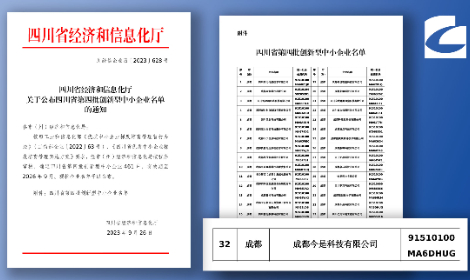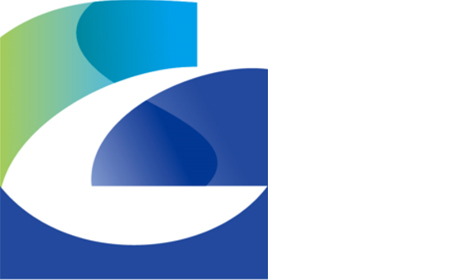Arterial network was first informed that recently, nanopore gene sequencing company today is technology announced the completion of more than 100 million yuan of B round financing. This round of financing is led by Huachuang Capital, Sequoia China, Sinopath Capital, Rong An Venture Capital, Huiyuan Capital, Chi Chi Growth Fund, and old shareholders Weidu Capital and Darun Capital with the investment, Chi Chi Capital as the exclusive financial adviser, the funds will be used for the development and commercialization of nanopore gene sequencer.
The nanopore sequencer developed by the company based on the "synthetic side sequencing" technology route solves the pain points of high gene sequencing cost, low efficiency and poor data quality, and can achieve the goal of "a few hours and several hundred dollars" for human whole genome sequencing, which is expected to promote the wide application of nanopore sequencer in clinical practice.
Previously, today is technology has completed the angel round financing of Kaifeng Venture Capital, and the A round financing led by Weidu Capital.
Su Yunpeng, CEO of Jin is Technology, said: "As the application scenario of nanopore sequencing becomes more and more clear, the imagination space is growing, and the attention of capital and industry to the track is increasing. Recently, Oxford nanopore applied for listing, and the industry is further hot. Today, science and technology has broken through the main technical barriers, with fully independent intellectual property rights of nanopore sequencers, master chip ultra-large scale integration technology, and the cost is very competitive. In this case, investors naturally favor nanopore sequencing companies represented by Jisu technology."
Low cost, high efficiency and high data quality are the prerequisites for the vigorous development of gene sequencing
According to BBC Research data, from 2010 to 2019, the global gene sequencing market showed a continuous growth trend, the growth rate was generally more than 10%, and the global gene sequencing market size was about 12.6 billion US dollars in 2019. "After gene sequencing enters the clinic on a large scale, the market capacity is expected to exceed $600 billion," Su Yunpeng said.
The second generation sequencing (NGS) technology represented by Imena is the mainstream of gene sequencing market at present. Between 2006 and 2015, the cost of NGS testing fell at a superMoore''s Law rate, with the cost of sequencing a whole human genome dropping from $10 million to $1,000.
"Clinical gene sequencing is very price sensitive, and it is often thought that the cost needs to fall to $100 to promote clinical large-scale application. But since 2015, the cost of testing for NGS technology has fallen slowly, from $1,000 to about $500, and there is still no clear technical path to bring the cost down to $100." Su Yunpeng talk.
In addition, because of the short reading length, NGS can only cover about 85% of the human genome, but there is increasing evidence that the 15% that it does not cover well (especially in the structural variation and other regions) is more closely related to the occurrence and development of diseases. NGS has limited ability to interpret structural variation and other regions, which limits the application of gene sequencing in the field of precision medicine.
Low efficiency is also a major pain point for NGS technology. NGS takes about 3 days from sampling to issuing a report.
In addition to NGS, the emergence of new gene sequencing technologies such as single molecule fluorescence and nanopore sequencing has provided the dawn to solve the problems of high cost, low efficiency and low data quality.
Single molecule fluorescence adopts the "single molecule side synthesis side sequencing" technology route, which has the advantages of high data quality and long reading length, but the detection cost is about 6 times that of Imena NGS technology. Nanopore sequencing, represented by Oxford nanopore, adopts the "direct sequencing" route with long reading length and lower cost than single molecule fluorescence, but the data quality defects have caused great obstacles to large-scale entry into the clinical field, and the realization of ultra-large scale integration is also limited by technical principles.
In general, NGS, single molecule fluorescence and nanopore sequencing technologies have their advantages and disadvantages, and they have not met the high requirements for gene sequencing technology in clinical applications.
Cost, efficiency, and data quality are the prerequisites for the gene sequencing and precision medicine industries to thrive. Is there a "perfect" sequencing technology with low cost, high efficiency, and high data quality? Today is the original intention of the creation of technology, which is to target the pain points of gene sequencing, based on nanopore sequencers, and break through the shackles of sequencing technology in cost, efficiency, and data quality.
Innovative "synthesis while sequencing" route to accelerate the clinical implementation of nanopore sequencing
Today is the technology founding team for classmates and many years of friends. The Chief Scientific Officer, Dr. Yaozhong Zou, was a senior Senior scientist at Roche''s nanopore sequencing division and made important contributions to bringing the performance of nanopore sequencers to commercial levels. CEO Dr. Su Yunpeng has been an executive of the world''s top 500 enterprises and has completed a number of national research and development projects. Chip director Jiang Ke has led the design of dozens of commercial chips.

Geneus technology CEO Su Yunpeng
According to Su Yunpeng, today''s science and technology has made a series of innovations in the three main directions of biochemical systems, semiconductor chips and MEMS chips, and has formed core technical barriers in the nanopore sequencing circuit.
Among them, biochemical system is the core of nanopore sequencing. Today''s biochemical system can eliminate false signals generated in the sequencing process, increase the upper limit of single sequencing accuracy, and increase the consensus accuracy to more than 99.99%, breaking through the current nanopore sequencing technology can not provide enough sequencing accuracy to meet the limitations of clinical applications.
Semiconductor chips are the backbone, determining how cheap and efficient nanopore sequencing can be. The company''s self-developed semiconductor chips achieve extremely low unit area and power consumption while ensuring high precision and high sampling rate.
MEMS chip is a platform for nanopores and other biochemical components to play a role, through the support of the biochemical system function and collect signals through the micronization of the supercapacitor electrode, combined with very low unit area of the semiconductor chip, each square centimeter can be integrated more than 1 million sequencing units, so that a chip has more than 10 million sequencing channels. It ensures low cost and high efficiency of sequencing.
Relying on the innovation in biochemical systems, semiconductor chips and MEMS chips, today is technology has built a "synthesis while sequencing" technology route with independent intellectual property rights, which shows an extremely attractive prospect on the core requirements of greatly reducing sequencing costs, improving data quality and improving sequencing efficiency.
Compared with other sequencing technology routes, "synthetic side sequencing" has the advantages of low cost, high data quality and high efficiency, which is expected to reduce the cost of human whole genome sequencing from 1,000 US dollars to less than 1,000 yuan, complete the human whole genome sequencing that originally took several days to complete in a few hours, and the data quality can meet the needs of a wide range of clinical applications.
At present, Jinshi Technology has completed the research and development of the engineering prototype of the nanopore gene sequencer. Next, today is the technology will focus on the non-clinical market, launched with 500,000 channels of the medium throughput nanopore sequencer, after the company will be for the clinical market, launched a ultra-high throughput nanopore sequencer with 10 million channels, fully enter the clinical market, to achieve the gene sequencing become a routine means of precision medicine, improve the level of human health of the company vision.
Investors say
Lu Hanjie, partner of Huachuang Capital, said: Huachuang Capital is very optimistic about the accumulation of science and technology in the fields of nanopore sequencer biochemistry, systems, chips, patents and intellectual property rights, and looks forward to the future development space of low-cost, long-read domestic sequencer. At the same time, we also hope that nanopore sequencing will continue to make low-level contributions in the fields of personalized therapy, genomics and multiomics, disease early screening and monitoring, and help the medical industry, as well as other industries to explore more unknown applications.
Dr. Chen Xuenze, Sequoia Capital China Fund, said: Limited by the length of reading, complex library construction and other defects, the application space of NGS is limited to a certain extent, and a new sequencing method is needed to further release market opportunities. In the future, low-cost, long-read, miniaturized high-throughput sequencing technology is one of the trends, and the technical path of today''s technology is more obvious differentiation and potential technology leadership. The company is expected to transform some unique methodologies of enzymes and nanopores to further solve the pain points of low accuracy, low throughput and high unit cost of existing nanopore sequencing, and is expected to further explore the existing market.

Geneus Technologies' first commercial nanopore gene sequencer G-seq500 is launched

Geneus Technology was successfully selected into the list of innovative smes in Sichuan Province

Chengdu Geneus Technology Co., Ltd. nanopore gene sequencing platform industrialization base environ..